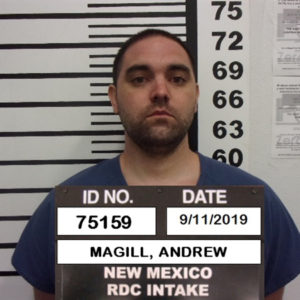See the full case write-up here
LAS VEGAS, N.M. — Richard Griego‘s first-degree murder trial will likely not go to trial on Oct. 7, 2019, the date it had been scheduled for, after his attorney filed a motion questioning his competency to stand trial.
According to a public docket for the case, attorney Todd Farkas filed a “Notice of Competency Issue and Motion to Stay Proceedings” on Sept. 11, 2019.

Farkas’ notice and motion come exactly one year after the case started moving toward trial after it was placed on hold the first time for the same issue.
On Sept. 11, 2018, according to the docket, an order was entered lifting the stay previously imposed on the case after the issue of competency was withdrawn by Farkas.
The case had been functionally paused the first time on Nov. 15, 2017, when Griego’s competency was officially questioned for the first time, although minutes from status hearings note that the attorneys and judge were aware that competency may be an issue.
